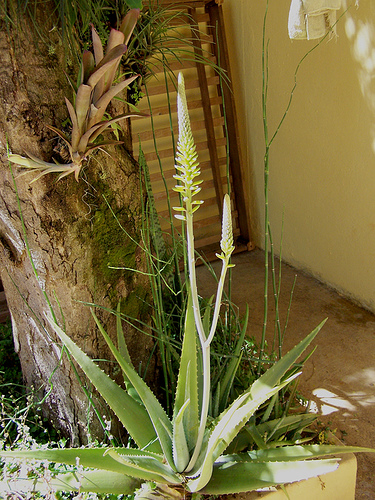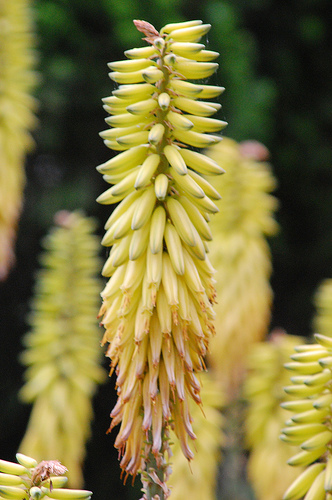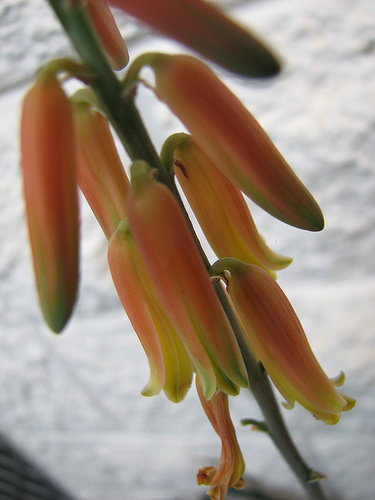|
REproduction |
|
 |
The flowers of Aloe vera are tubular, brightly colored red or yellow, unscented and produce an abundance of nectar. The Sunbirds (Nectariniidae) are frequent visitors to the aloe flowers in the field and in African gardens. Although not typical the aloe plants can be visited by bees. Even baboons have been seen collecting the flowers of some species of aloe plants in order to suck the nectar.
|
| Almost all aloes are self-incompatible, although the flower are protandrous (anthers, the pollen-bearing part at the upper end of the stamen of a flower ripen and pollen is dispersed before the stigma, the part of a pistil that receives the pollen is receptive) and so self-pollination would not occur anyway. |
 |
 |
If there are more than one species of aloe flowering at the same time the sunbirds, and other organisms that spread the pollen will go to more than one species, so hybridization is quite frequent. Most aloes produce capsules, dry dehiscent fruits that split open at maturity to release the seeds. The seeds are winged and will hopefully be taken to other places to grow using the wind.
|